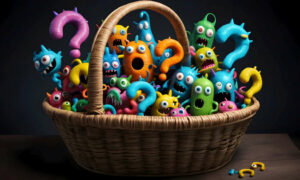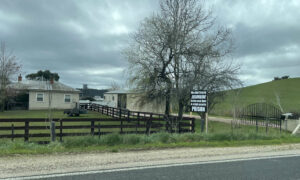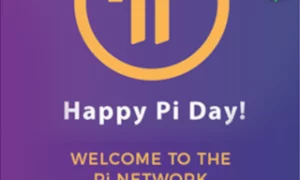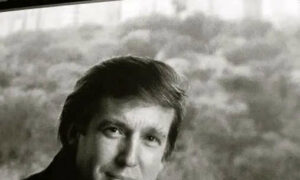*Pic: Ping Chen points to Pon Ting …
Charles Wooley
When I grew up in Launceston in the fifties and sixties a remnant Chinese influence was everywhere but rarely celebrated. There was Chung-Gon’s exotic greengrocery and various interesting looking Chinese restaurants, which sadly my family never visited. There was also, to my mind, a creepy old Joss House hidden away in a dark corner of the Queen Victoria Museum. That spooky Chinese Temple always fascinated me, even though visits there often gave me nightmares.
Despite this apparent early onset of Sino-phobia, I was a mate at school of kids who had names like Chintok, Ponting, Wing and Foon. It never occurred that they might have been descendants of the thousands of Chinese miners who had come and gone from the old alluvial tin mining settlements of the northeast; places like Weldborough (the source of my Joss House), Branxholm and Derby. On those diggings in the late eighteen hundreds the Chinese often outnumbered European miners. There was, however, much more racial tolerance in Tasmania, than on the mainland goldfields, where beatings and even murderous attacks on Chinese miners were common. I went to a tough school in Launceston and while I remember discrimination against kids of aboriginal descent, those with Chinese forebears seemed happily, to be under the racial radar.
Many Chinese settlers went on to become successful businessmen and women in Launceston and even south of the border, in Hobart, with the likes of the Henry family and the Chungs. The Tasmanian Chinese who stayed on, did well. One of the Wings (Don) made it all the way, in this century, to become President of our state’s Legislative Council. My own dentist (Gordon) is a direct Henry descendant, and his gentle skills always cause me to appreciate, that fifteen hundred years ago, the Chinese were already drilling and filling teeth.
Then there was my former ABC colleague, Helene Chung, a glamorous and enigmatic figure: a third generation Tasmanian who was still one hundred percent ethnic Chinese but who spoke only English and, curiously, with an almost impeccable Oxford accent. Who knows what the suspicious old Communist regime made of her, in 1984, when this Hobart girl arrived in Beijing as the ABC’s first China Correspondent.
All of this is just my own personal scratching on the surface of a much deeper Chinese history that most Tasmanians know little about. China has recently discovered Tasmania and maybe it is time for us to rediscover our Chinese pioneers. But for now, the point I really want to explore is, given our Chinese history, how strange it is that Hobart is the only capital city in Australia without a Chinatown.
Chinatowns started in places as far apart as Liverpool and San Francisco, back in the eighteen hundreds, usually as an enclave where Chinese immigrants and seafarers might find some solace (and sometimes a little opium) in a largely unfriendly western culture. Today’s Chinatowns are less about China specifically and more of a pan-Asian business district, specializing in food and the tourist experience. From Sunday morning yum cha to late night dining, any day of the week, a Chinatown is always an energetic and bustling place.
Where … should we light our Chinese lanterns … ?
The question is, where, in the lonely, bleak and dark, lunar landscape that characterises so much of central Hobart-by-night, should we light our Chinese lanterns?
Our most illustrious Chinese artist is Ping Chen whose recent collection ‘Unseen Mountain’ was all about the almost forgotten role the Chinese played in our 19th Century history. His work was presented in book form to the President of China, Xi Jinping, during his visit to Tasmania late last year. I don’t want to sound too much like my predecessor Leo here, but Ping’s work is highly detailed, with a blend of that quick, economic brushwork we expect in Chinese art. It also has, however, a complex western influence of impressionism and commentary so that his ‘Unseen Mountain’ series can show, among laboring Chinese tin miners, a ghost from the future. A cricketer, perhaps a Ponting, facing up to posterity, from that scarred 19th Century mining landscape. But that’s enough deconstruction. Let’s build Chinatown.
Over coffee in West Hobart, Ping warmed to the idea. He fancied a Chinatown in the western end of the city, where he has his studio. I remember, twenty years ago, this was called the ‘Paris End’ but somehow the dream foundered. For the ‘Shanghai End’, Ping was thinking Goulburn or Bathurst Street. But when we wandered down those boulevards we found, at the mountain end at least, there were few retail properties. Not every householder wants Chinatown next door. Imagine the zoning nightmares!
Marti Zucco, the father of the enormously popular North Hobart restaurant strip, and a long-serving City Councilor, favours an area on the edge of the CBD, on Harrington Street between Collins and Liverpool, where Asian eateries abound though not yet any of the Chinese variety. If the idea takes off, there’s ample room for expansion into the neighbouring Victoria Street, and there are less commercial zoning problems.
I think the artist Ping liked it there too. He would have wished to close off to traffic, Victoria Street between Collins and Macquarie, but then he is an artist and not a town planner.
I worried about the present lack of Chinese eateries in the area but Councilor Marti Zucco reckoned, “Once we put up the Lion pillars, the Chinese restaurants will come.” He reminded me that the City Council is about to enter into a sister-city relationship with Xian in northwest China. Xian is a heritage city and the home of the famous Terracotta Army and, who knows, they might even like to get onboard with Hobart’s Chinatown.
My dentist, Gordon Henry, didn’t want to give my cause any pain, but pointed to an unofficial Chinatown, existing even now, in Sandy Bay. Out the window of his surgery he showed me the intersection of Sandy Bay Road and Russell Crescent, near the Coles supermarket, where more than half a dozen Asian eateries already flourish, and with the celebrated Me Wah Chinese restaurant only a couple of hundred metres up the road. “Its already happening Charlie, without any real planning,” Gordon told me. And maybe he’s right. Perhaps that’s how Chinatowns everywhere have always grown.
But still, I’m keen on a bit of social engineering to enliven the centre of our, lets face it, after dark moribund city. All of my life the town’s action has always been around the edges. The heart has always been dead. But I reckon we could get it beating again. If we all got behind the concept of a Chinatown, somewhere, in the heart of Hobart, it would be a resounding success.
It would wok around the clock.
Or my names not Wu Li.



























Simon D
April 26, 2015 at 14:37
The future, Mr. Gittes! The future..
Bring it on.